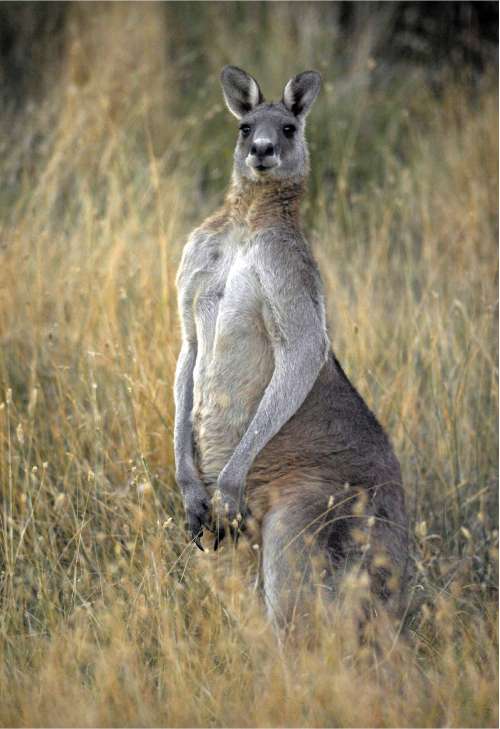Kangaroos win second reprieve from mass slaughter

Four hundred kangaroos on Australian Defence Department land have won a last-minute reprieve, after a public outcry at a planned mass slaughter.
Mobs of eastern greys have colonised a former naval site near Canberra, the national capital, where their over-grazing is damaging native grasslands, the habitat of several rare species of lizard and moth.
Last year, military officials announced a cull, but quickly backed down and said they would relocate the kangaroos instead. Animal welfare groups condemned that as inhumane, so it was recently decided that they would be slaughtered after all: shot with a tranquilliser dart, then killed by lethal injection.
This time, the protests were deafening, with Sir Paul McCartney among those condemning the plan. Sir Paul – who supports the British animal rights group Viva! – called for urgent action to "end this shameful massacre". Protesters camped on the abandoned naval site, threatening to form a human shield between the kangaroos and the shooters.
Yesterday the Defence Department said it had put the plan on hold, and was seeking approval for "a scientific trial of kangaroo management techniques including translocation". The RSPCA, which had been standing by to supervise the killing, estimates that moving the animals will cost A$3,500 (£1,600) per head, or a total of $1.5m.
The episode has underlined Australians' ambivalence towards kangaroos, which adorn the national coat of arms, along with the emu, and the tail of Qantas aircraft, symbolising Australia to the world. Yet farmers consider them a pest, because the 60 million kangaroos eat crops, destroy fences, and compete with sheep and cattle for grazing land. Farmers can legally cull them, as can professional shooters for the thriving kangaroo meat and pelt industry. Last year, 3.6 million of the commoner species, including eastern greys, were killed for commercial purposes.
Lean, gamey kangaroo meat is increasingly popular abroad, particularly in Europe, the US and Japan. It is exported to nearly 60 countries, with skins used for shoes, bags, and other products. At home, there is still reluctance to tuck into a kangaroo steak or kebab, particularly among those who grew up watching the television series Skippy. Most states legalised the meat for human consumption only in the early 1990s. Until then, it was mostly eaten by dogs and cats.
Butt the kangaroos in Canberra will probably be moved to an area of New South Wales where they can be legally culled. Michael Linke, chief executive officer of the local RSPCA, said: "If you are going to throw a million and a half dollars at this project, wouldn't it be more prudent to spend that money on translocation of endangered species?"
The Chief Minister of the Australian Capital Territory, which covers Canberra, told ABC radio: "All of the advice I have... is that it [moving them] is inhumane, that it won't be successful. There's nothing to be achieved, and it shouldn't be attempted."
Join our commenting forum
Join thought-provoking conversations, follow other Independent readers and see their replies
Comments